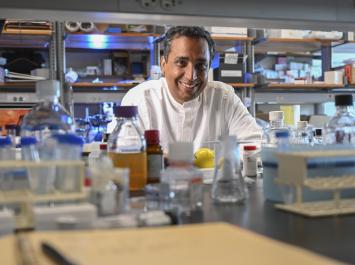Behind the Scenes: Reporting the latest discoveries
Managing editor Jonathan Shaw shares what led him to feature Sharad Ramanathan in the January-February issue.
People often ask me how we choose our subjects. In the case of Sharad Ramanathan, a quantitative biologist, I hoped to answer a question: How does someone trained in math and physics approach questions in biology, and how does that advance scientific understanding? Ramanathan had been controlling worm behavior with a computer running an algorithm that learns by intervening in the worm’s neural signals and observing the effect. He’d also been studying how cells differentiate to become tissues such as heart, lung, or skin.
I was incredibly fortunate to have recently reviewed From One Cell, a book about the history and future direction of developmental biology written by Ben Stanger M.D.-Ph.D. ’97, a former student of pioneering stem cell scientist Doug Melton. The book describes the miraculous process by which a single cell becomes a whole organism. All the information needed to create a human being can be found in a cell’s DNA, what Stanger calls “life’s blueprints.” And if scientists could just figure out how to decipher it and direct cellular development, they might learn how to prevent and cure disease and launch the field of regenerative medicine. Stanger was careful not to oversell the potential: humans aren’t axolotl that can regrow limbs.
But the book made me think I knew enough to be able to talk to Sharad—maybe. When we finally connected, he explained that he had been working on something important, a project he and his lab were proud of, but something that required care in the way it was presented to the world. And then he told me how his group had used machine learning to guide them to a major breakthrough. They had discovered how to guide stem cells through the first steps on the path to becoming whole organisms—without a fertilized egg—a “holy grail” in biology, as one of his colleagues describes it.
Working for Harvard Magazine has allowed me to describe the evolution of stem cell science across two decades, from Doug Melton’s achievements in diabetes research to this latest discovery, which hold tremendous promise for developing therapies and even cures for developmental diseases. Donor support is what makes this kind of sustained coverage of a new field possible.

